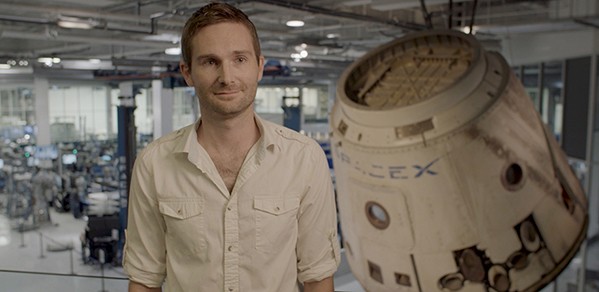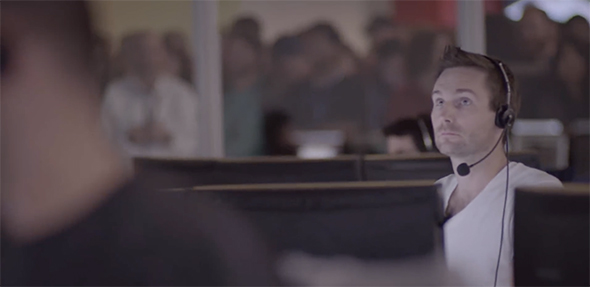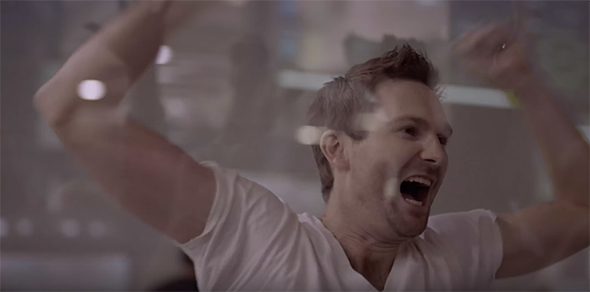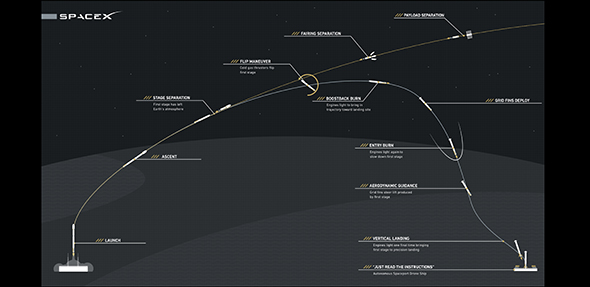
From a young age, Lars Blackmore was interested in space travel and had a goal to one day work on electronics for spacecraft. It’s been a journey that’s led him from studying Engineering at Cambridge to completing a PhD in Aeronautics and Astronautics at Massachusetts Institute of Technology (MIT), before going on to land engineering roles at both NASA and SpaceX.
I was thankful to be able to lean on the General Engineering that I had learned at Cambridge. It was this foundation in General Engineering (Parts 1A and 1B), coupled with the ability to conduct novel research in my particular field, that enabled me to do my job as SpaceX’s Principal Rocket Landing Engineer.
Alumnus Lars Blackmore
Lars is currently the Principal Rocket Landing Engineer for SpaceX’s Falcon 9 – the first orbital class rocket capable of reflight. He is responsible for the entry, descent and landing of the rocket and his next project will see him leading the entry and landing for Starship – SpaceX’s next-generation, fully reusable rocket with room for up to 100 passengers. The destination? The Moon and Mars, of course!
We caught up with Lars for a chat about the world of precision rocket landing, his career to date, and why internships are so important.
I first became interested in rocket landing while working at the NASA Jet Propulsion Laboratory in California. My colleagues and I developed new techniques for precision landing on Mars. The idea was to give a Mars lander the sensors and algorithms it required to work out where it is and how to get to where it needs to be. This required new developments in the field of Guidance, Navigation and Control (GNC), which I specialised in at Cambridge and later in my PhD at MIT.
In around 2010, I heard that SpaceX was interested in making their new rocket reusable. It was already highly optimised for going into space, but not for coming back to Earth. To achieve this, SpaceX needed someone who understood how rocket landing worked (and in particular, someone with knowledge of precision rocket landing).
This became my job: figuring out how to turn a rocket – that only went up into space in one piece – into a rocket that could come back to Earth and be reused like an aircraft. This started out as mainly a GNC problem, but the scope quickly expanded once we realised we needed to make significant hardware changes to the rocket in order to make it land.
I was thankful to be able to lean on the General Engineering that I had learned at Cambridge. It was this foundation in General Engineering (Parts 1A and 1B), coupled with the ability to conduct novel research in my particular field, that enabled me to do my job as SpaceX’s Principal Rocket Landing Engineer.

Lars in mission control. Credit: SpaceX YouTube.
Falcon 9 – the ideal trajectory. Credit: SpaceX.
“The Falcon has landed”
How does it feel to be the person responsible for landing Falcon 9?
It’s always exciting, and sometimes terrifying! From the moment the rocket lifts off there’s nothing anyone can do, you just have to watch. In the early days, far too many rockets exploded. Sitting in mission control after an explosion trying to work out what happened was very stressful. But this job has given me more unforgettable moments than I could ever ask for: watching the first Falcon 9 land at Cape Canaveral, watching the first landing on a ship, and watching both of the Falcon Heavy side boosters land simultaneously.
The best part for me was when, as a team, we started to realise that landing was possible. We had all worked together to make a million individual breakthroughs and there was a moment when all these breakthroughs came together to show that, as long as everything on the rocket did what it was supposed to, we’d land. That was when it felt like everyone’s work was eventually going to pay off, even though it still took us a few tries before it finally did!
I’m very proud of the innovations that have made landing possible, including adding steerable fins to the rocket and developing new algorithms for precision landing. There’s a huge team behind these achievements – from those designing hardware on the rocket and the launch site, to those testing rocket engines, bringing the rocket home from sea, and ensuring the safety of landing for the general public. It has been a privilege to work with such talented people who have dedicated their all to landing Falcon 9.
Lars makes cameo appearances at 0:27 and 2:27.
Why did you become an engineer?
I always loved building things, especially electronic devices, and I had really great teachers at school that encouraged this. Even my fellow students started to appreciate what I could do after I invented the ‘Teacher Detector’, which used a pressure pad to give advance warning of when a teacher was approaching.
I was interested in space travel from an early age, especially the question of whether we are alone in the universe. Even now, this to me remains the most tantalising question of our time. Indeed, despite understanding vastly more about our solar system and our universe than we did 50 years ago, and despite discovering in the last few years an abundance of far-away planets that are similar to Earth, we still have no idea whether life exists elsewhere.
For years, I had hoped that I could work on electronics for spacecraft, but strangely I had no clue what an engineer did, or that being an engineer was the path to making that happen. It was only when I started looking at courses available at university did I realise that Engineering at Cambridge was the perfect fit.
Working for NASA seemed like an impossibly distant dream, until I spent my third year on exchange at MIT, where even undergraduates can work on satellites and rockets as a normal part of their education. It was then that I decided that being a NASA engineer was the path I wanted to pursue.
Making the most of internships
What is your advice for those considering a career in engineering who might be interested in following a similar route to you?
Engineering can be an amazing career, and I look back with sadness at the number of people from my year at Cambridge who switched from engineering to finance or consultancy and missed out on the opportunities that I had. Related to this, I think it’s important to see engineering as more than a set of Tripos exams – extracurricular projects and good internships can encourage you to make real innovations and get excited about what’s possible. It’s amazing to see what undergrads can do on student rocket teams, race car teams, and undergrad research opportunities.
Internships are essential, especially if you can find one that will allow you to both make real contributions and prove to future employers what you can do. It is often surprising how much an intern can do under the right conditions. We have interns at SpaceX whose designs fly into space within a few months of their internship. I wish I had learned earlier that, to be successful, it’s not enough to be excellent at what you do – you have to show the right people that you’re excellent. Internships are a great way of doing that.
For people looking to go into the space business, it is unfortunately still very hard to work for any US aerospace organisation, including private companies and NASA, unless you have a US passport or Green Card. My route was to do a PhD at MIT, then try very hard to find someone to sponsor me for a Green Card. I will be forever grateful to the Jet Propulsion Laboratory at NASA for giving me that opportunity. I still tell people that this path is in no way guaranteed to succeed, but it is possible. There are also many European Space Agency centres, and some recent projects have been very exciting, such as landing on a comet or preparing to land a rover on Mars. This is an option that doesn’t have the hurdles associated with US aerospace.

Lars celebrates the successful 2015 landing of the first stage of Falcon 9 back on Earth, following its delivery of 11 satellites to low-Earth orbit. Credit: SpaceX YouTube.
Never stop learning
What’s next for Lars?
Sending people to the Moon and Mars! I’m now leading entry and landing for Starship, a fully reusable rocket that will one day be able to land up to 100 people on the surface of Mars. Because it lands vertically, like Falcon 9, it should be able to land almost anywhere in the solar system. The Starship’s engines run on methane, this means we can refuel it using propellant generated on Mars and then fly back to Earth or fly further to more distant planets. The near-term goal is just to get Starship into Earth orbit and back with a 100% reusable vehicle, but even that is exciting, because the payload capacity will be far beyond that of any rocket that has ever existed – and with full reusability, the cost should be tiny compared to existing rockets.
For me personally, this is a great opportunity to continue learning, especially outside of my main field of expertise. Designing the rocket hardware from the ground up to be capable of landing, will require a much broader understanding of engineering, combined with all the lessons learned from landing Falcon 9. “Experience comes immediately after you need it,” and many times I realised late in the game that our lives would have been much easier if we could have made simple changes at the start. This time around, I’m hoping to use that experience early in the design cycle, and perhaps save myself some grey hairs in the process!
Landing Starship will be much harder than landing Falcon 9, but if we can do it, it will be revolutionary. Let’s see what happens!
- In 2015, Lars made the Innovators Under 35 listicle compiled by MIT Technology Review magazine. Watch his talk.
The text in this work is licensed under a Creative Commons Attribution-NoDerivatives 4.0 International License. You may not adapt this work. If you share this content on your site please link back to this page. For image use please see separate credits above.

